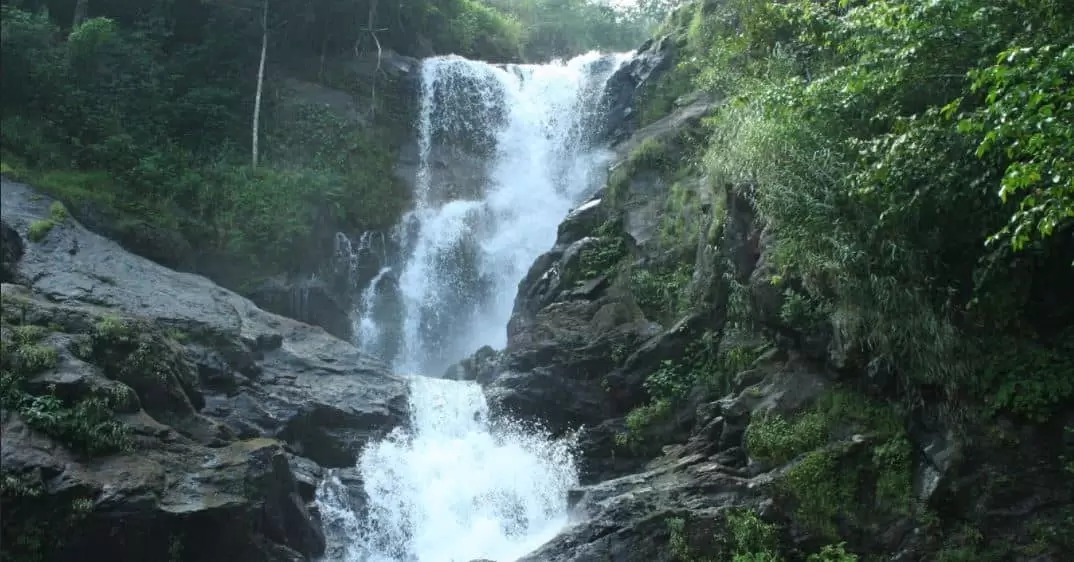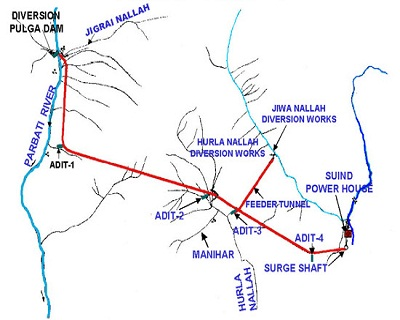Description

Copyright infringement not intended
Picture Courtesy: https://paradisecoorg.com/Coorg_place/irpu-water-falls-kutta-coorg/
Context: The drying up of the Lakshmana Tirtha river in Kodagu District, Karnataka, is a critical issue that highlights the severe impact of drought and insufficient rainfall on local communities and ecosystems.
Details
- Last year, Kodagu District experienced a deficit rainfall of only 40% of its average. This significant shortfall in rainfall has resulted in a depletion of groundwater levels and reduced flow in smaller streams and rivers.
- The lack of adequate rainfall has led to depleted groundwater levels, which directly impacts the flow of rivers and streams. Smaller streams in the hills dried up as early as February, contributing to reduced inflow into major rivers like Lakshmana Tirtha and Cauvery.
|
Current Situation and Urgency for Rainfall
●The situation has worsened with the onset of April, with more rivers in the district beginning to dry up. The absence of regular rainfall since January exacerbates the water crisis.
●The lack of immediate signs of rainfall raises concerns about the future water supply for communities in the Kodagu-Mysore region.
|
About Lakshmana Tirtha River
- The Lakshmana Tirtha River starts in the Brahmagiri range and flows eastward before joining the Kaveri River at the Krishna Raja Sagara reservoir.
- The river plays a vital role in sustaining agriculture, particularly coffee plantations, and provides drinking water to communities in South Kodagu.
Threats to Lakshmana Tirtha River
- Water Depletion: Groundwater depletion and exposure to direct sunlight contribute to the river running dry months after the monsoon season.
- Pollution: Tributaries of the Lakshmana Tirtha, such as streams of Kuranthoad near Ponnampet and Gonikoppal, are polluted due to waste dumping. Coffee wastewater from the de-pulping process poses a significant threat to water quality.
- Untreated Waste Disposal: Untreated waste from Hunsur is directly discharged into the Lakshmana Tirtha River, contributing to pollution and environmental degradation.
- Illegal Sand Mining: The River faces illegal sand mining activities, which not only disrupt its natural flow but also cause erosion and habitat destruction. Sand mining without proper regulations poses a serious threat to the river's stability and ecological balance.
Impact on Environment and Communities
- Ecological Degradation: Pollution and habitat destruction jeopardize the river's biodiversity and ecological balance.
- Water Quality: Contaminated water due to waste disposal and pollution affects the quality of water available for drinking and agricultural purposes.
- Community Dependence: Communities, such as those in Hunsur, rely on the Lakshmana Tirtha for drinking water, highlighting the urgent need for water conservation and pollution control measures.
- Agriculture: Farmers, especially those reliant on the river for irrigation of coffee plantations, are facing significant challenges due to water scarcity. The drying up of the river hampers agricultural productivity and threatens livelihoods.
- Drinking water and Health Issues: The water crisis extends beyond agriculture, affecting residents and their livestock. Scarcity of drinking water poses a serious threat to public health and well-being.
Addressing the Challenges
- Regulation and Enforcement: Strict enforcement of regulations to curb illegal sand mining and waste disposal is essential.
- Waste Management: Implementation of effective waste management practices, including proper treatment of industrial and domestic waste, is crucial.
- Community Engagement: Engaging local communities in conservation efforts and raising awareness about the importance of preserving the river's health.
- Policy Interventions: Advocating for policy interventions to protect river ecosystems and promote sustainable water management practices.

Conclusion
- The drying up of the Lakshmana Tirtha River due to inadequate rainfall highlights the urgent need for coordinated action to address water scarcity in Kodagu District. Immediate relief measures and long-term strategies are crucial to safeguard livelihoods and ensure the well-being of communities dependent on these vital water sources.
Source:
Wikipedia
Thehansindia
|
PRACTICE QUESTION
Q. India's federal system divides water management responsibilities between central and state governments. This can lead to challenges in coordinating water-sharing agreements between states, particularly for transboundary rivers. How can India's federal structure be reformed or adapted to better address the issue of water scarcity and ensure cooperation between states in managing shared water resources?
|
















